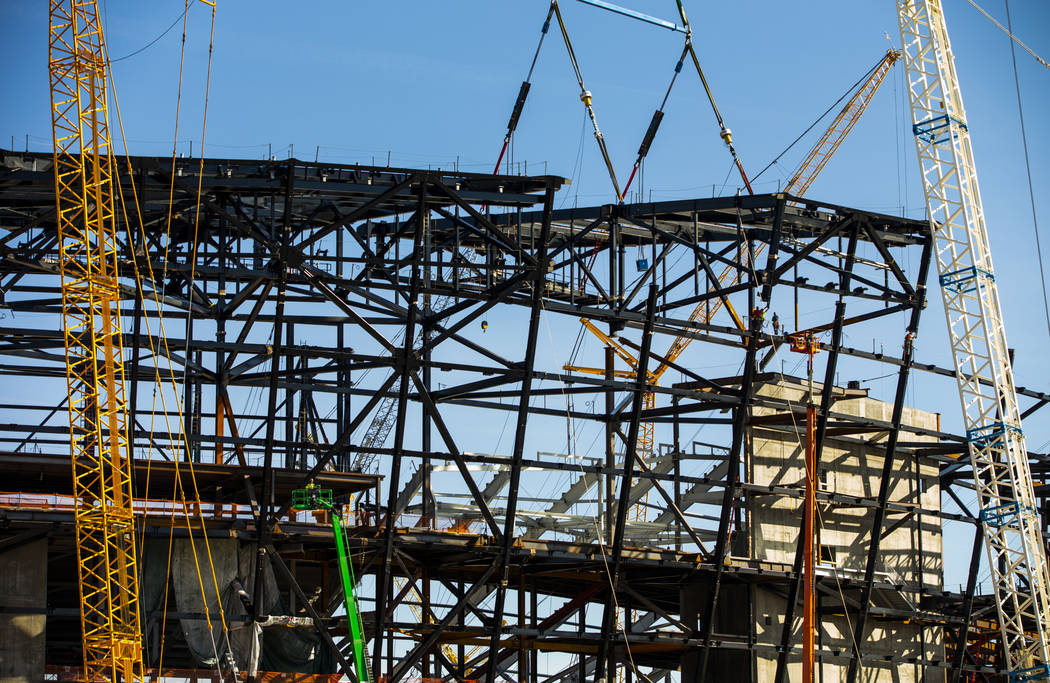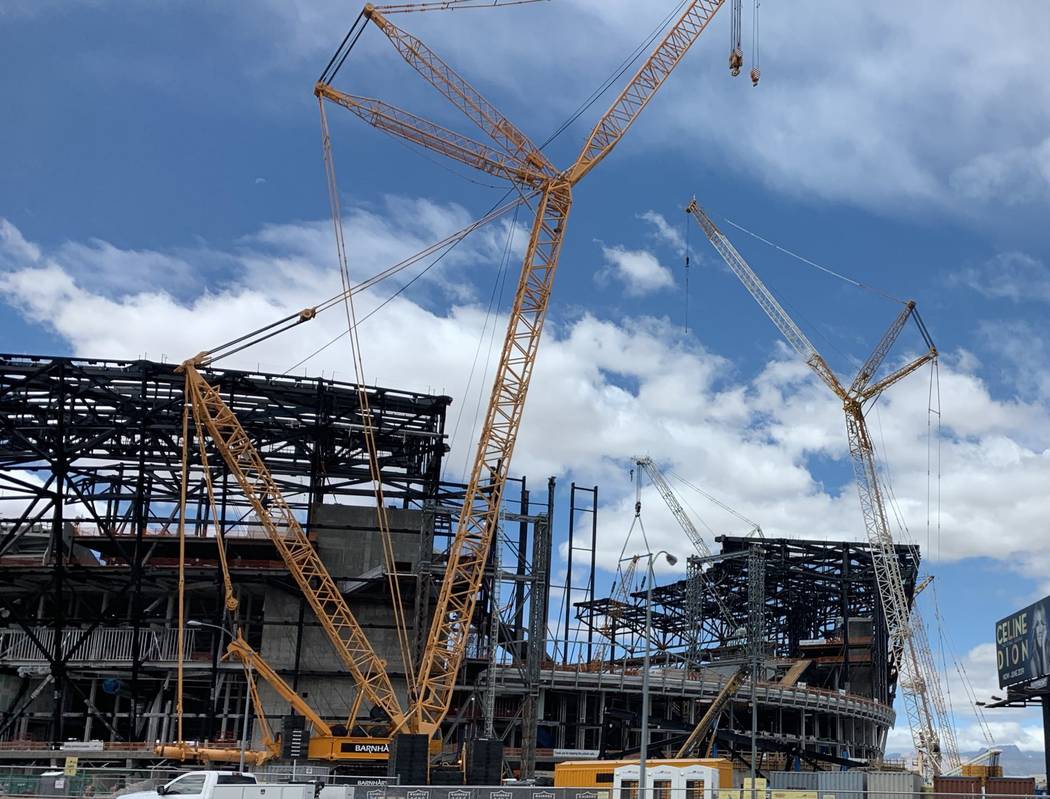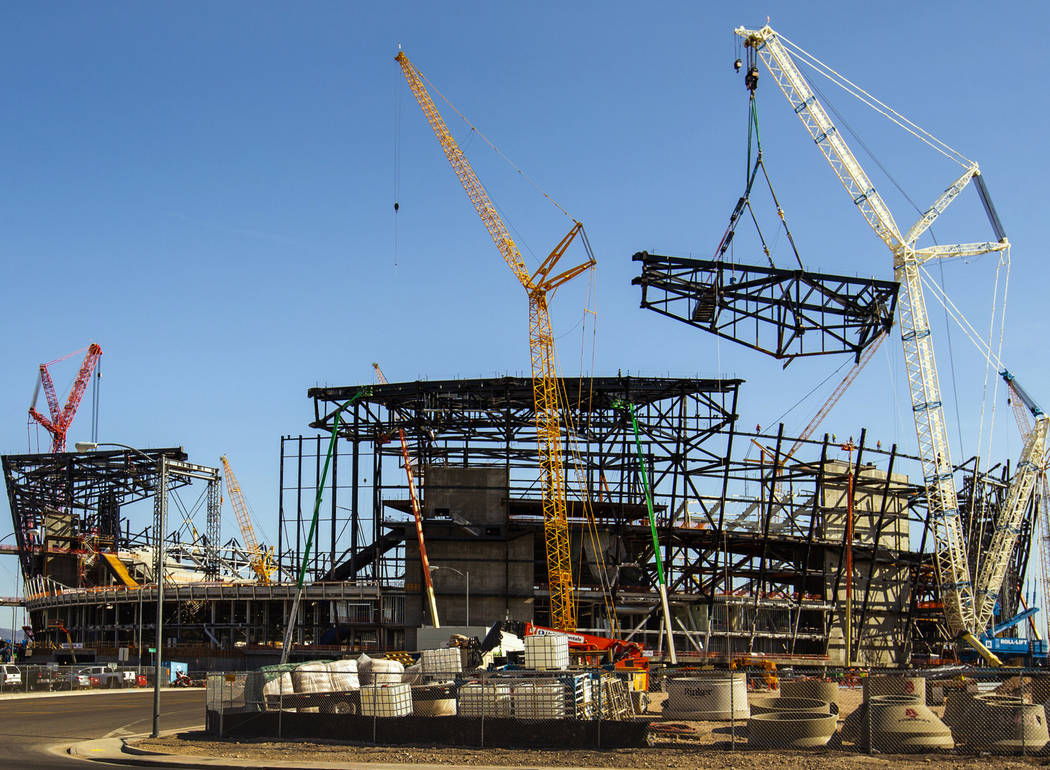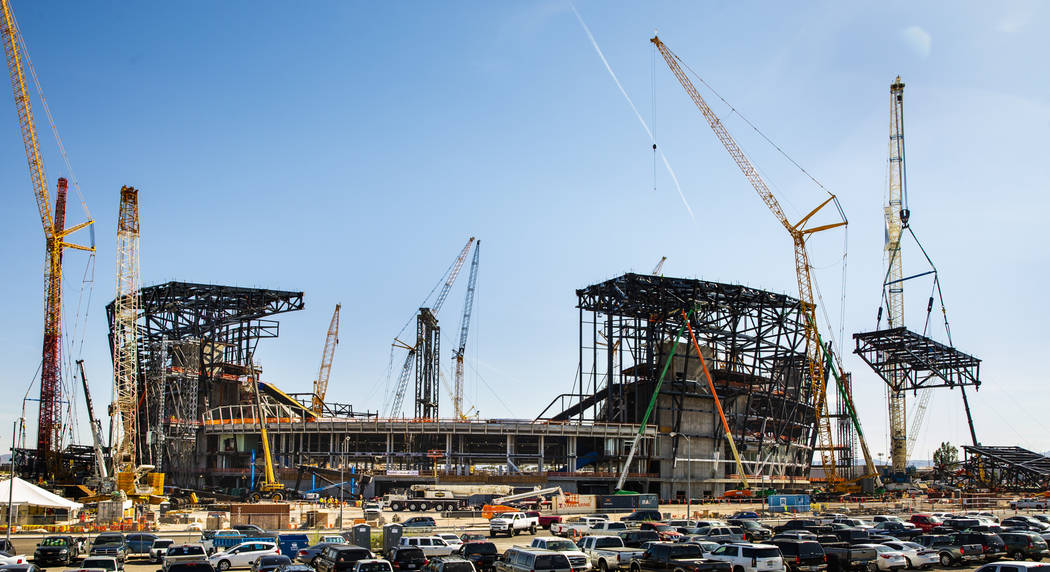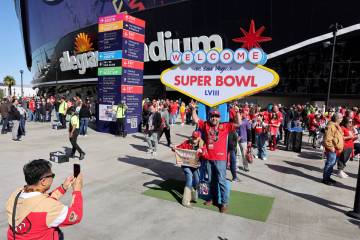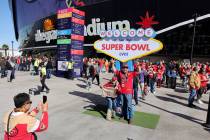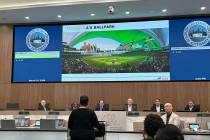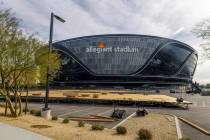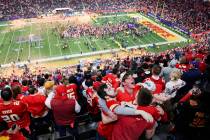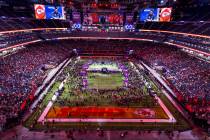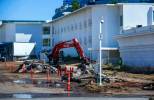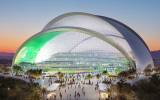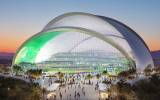List of concerns keeps Las Vegas stadium project lead up at night
Though it sometimes seems officials have nothing but good news regarding the construction of the Las Vegas stadium, one official acknowledged a list of worries tied to the $1.8 billion project that occasionally keep him up at night.
At the top of the list was the 53-day delay of the fabrication, delivery and assembly of structural steel, according to Las Vegas Stadium Co. Chief Operating Officer Don Webb. There are about 185,000 individual pieces of structural steel that will make up the skeleton of the 65,000 seat domed stadium.
“Not all of it arrived when we wanted it to arrive and not all of it was fabricated as we wanted it fabricated and that created an almost two-month delay on the project,” Webb said at last week’s Las Vegas Stadium Authority meeting. “Had we did nothing than simply monitor that we would have indeed finished late. But we aren’t just monitoring it, we’re resolving problems; that’s what we do.”
In the process of overcoming that delay, the project team rearranged some project work out of its planned sequence to keep the completion date of July 31, 2020 on point.
“For instance, we’re actually in the process of applying finishes, finished walls, paints and fixtures inside a stadium where the exterior walls haven’t been constructed or closed in and where the roof of the building will not be fully enclosed until March of the next year,” Webb said.
While that allowed the project to dodge a delay, it also presents challenges going forward, Webb lamented. With the roof not expected to be fully covering the inside of the stadium for almost another year, some of the finishes inside the structure could be damaged if the area has a strong rainstorm.
“We’re factoring that into it, but that is preferable to delaying the completion,” Webb said. “It also results in protective measures and those come with costs in order to avoid much of that damage as possible.”
Impact of tariffs
Another issue is tariffs put on imported steel by President Donald Trump.
“The earlier rounds of tariffs, we worked those into the budget and in some cases worked around them by pre-ordering steel,” Webb said.
It remains to be seen how the tariffs will affect future purchases imported from China. Webb said it’s slightly unknown how that will play out.
“Since a lot of what has yet to be purchased and installed in the stadium involves high-tech electronics and those are largely currently produced in China, that presents a concern,” Webb said. “I don’t overly stress on this concern, because we’ve been in touch with some of the main manufacturers of our scoreboard and other high-tech electronics and we know about their plans to shift manufacturing to the Philippines, Mexico and other places, precisely because of these tariffs.”
The order tied to those electronics is between $2 million and $3 million, Webb said.
The cable net roof presents another possible issue, as the type being used hasn’t been used in the U.S. before.
“It has enormous advantages, but the fact that it’s not been completed in the United States on a major project and that it has such close tolerances, for instance, on an 850-foot length of this cable, it has to be within seven-eights of an inch on either side or else it doesn’t fit or operate properly,” he said. “That is a two-one-hundredths percent of variance. That is why I occasionally refer to this as a 17-acre Swiss watch. That’s the kind of tolerance we’re dealing with here.”
‘Little margin for error’
Raiders President Marc Badain said that despite the preciseness of the roof operation, he has full confidence the construction team put together by Mortenson-McCarthy Joint Venture, the general contractor building the stadium, will install the roof system in the time allotted for it in the stadium’s build schedule.
“There’s very little margin for error,” Badain said. “We have the best people in the world on it. I’m confident that it’s going to be done on time and on budget.”
The lack of an available skilled workforce has also been an issue the stadium team has faced. Webb said they’ve had an issue especially in finding iron workers for the site.
“Those of you heavily involved in public policy might want to reconsider the drive to push every high school senior into college to get a college degree,” he said. “There are many days that I have plenty of college graduates, but I can’t find a welder. Our fixation with college education is probably wonderful in some respects, but vocational training really shouldn’t be overlooked in this country as well.”
Webb said the project is about to be over the hump on that issue, as all of the structural steel is expected to be in place by mid-August.
Despite the concerns laid out by Webb, Badain downplayed the possible issues, stating the crew of 1,200 construction workers — which will balloon to almost 2,000 by the end of the project — have been and will continue to work around them, ensuring the stadium is ready for a fall 2020 kickoff.
“There’s probably 100 concerns a day,” Badain said. “We address them. We have a great project team. The Mortenson-McCarthy team is on top of everything and has never missed a deadline.”
Contact Mick Akers at makers@reviewjournal.com or 702-387-2920. Follow @mickakers on Twitter.



